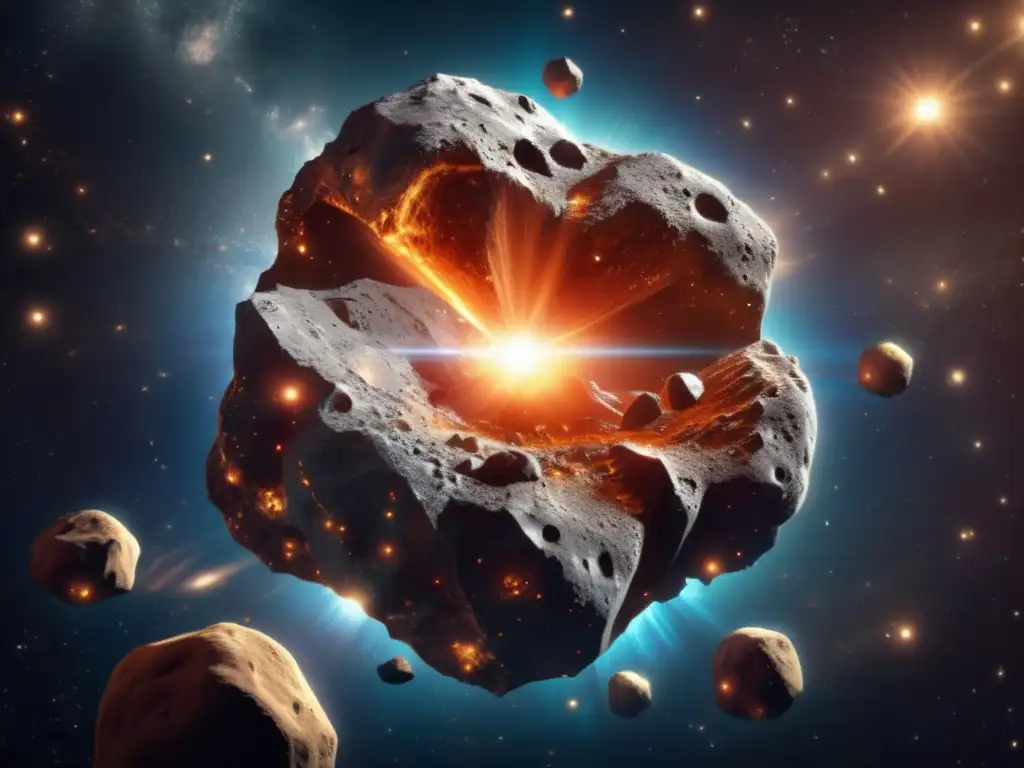The Intriguing Nature Of Asteroid Ascanius

Introduction
Asteroids have captivated human interest for centuries due to their mysterious nature and potential impact on our planet. One such intriguing asteroid is Ascanius, named after the son of Aeneas in Roman mythology. In this article, we will explore the fascinating characteristics and history of this celestial object, shedding light on its significance in the study of asteroids.
Discovery and Physical Properties

Discovery
Ascanius was discovered on January 19, 1989, by Carolyn S. Shoemaker at the Palomar Observatory in California. It belongs to the Apollo group of asteroids, which have orbits crossing Earth's path around the Sun.
Physical Properties
Ascanius has an estimated diameter of approximately 1 kilometer, making it a relatively large asteroid. Its composition is predominantly rocky, with traces of metallic elements. Observations have revealed a rough surface texture and irregular shape, suggesting a complex geological history.
Orbit and Rotation
Ascanius follows an elliptical orbit around the Sun, with an average distance of 1.07 astronomical units (AU) from our star. Its orbital period lasts approximately 1.34 years. Regarding rotation, studies indicate that Ascanius has a rotation period of around 7.6 hours, causing significant variations in sunlight exposure across its surface.
Potential Hazards and Impact

Near-Earth Asteroid
As an Apollo-type asteroid, Ascanius has a close approach to Earth's orbit, coming within a distance of 0.03 AU at its closest point. While it poses no immediate threat, tracking and studying asteroids like Ascanius are essential to assess potential hazards and develop mitigation strategies.
Impact Calculator
Using impact calculators, scientists can simulate the effects of an asteroid collision based on various parameters such as size, velocity, and density. Fortunately, the estimated size and trajectory of Ascanius do not indicate a significant risk of a catastrophic impact event in the foreseeable future.
Mission Proposals
Researchers have proposed several missions to study Ascanius up close, aiming to gather valuable data about its composition, structure, and potential resources. These missions could provide valuable insights into the early solar system and enhance our understanding of asteroid formation and evolution.
Mystical and Cultural Significance

Roman Mythology
In Roman mythology, Ascanius, also known as Iulus, was the son of Aeneas, the mythical founder of Rome. Ascanius played a significant role in the legendary story of the founding of the city. The naming of this asteroid after him reflects the enduring influence of ancient myths on modern astronomical discoveries.
Ancient Beliefs
Asteroids have been revered in various cultures throughout history. Ancient civilizations associated them with gods, omens, and cosmic events. Ascanius symbolizes the connection between the celestial realm and human existence, serving as a reminder of our place in the vast universe.
Inspiration for Art and Literature
The enigmatic nature of asteroids, including Ascanius, has inspired numerous works of art, literature, and even movies. From science fiction tales to philosophical musings, their presence in our collective imagination reflects our perpetual fascination with the unknown and the wonders of the cosmos.
Frequently Asked Questions

-
Can Ascanius collide with Earth?
No, current predictions suggest no risk of a collision between Ascanius and Earth in the foreseeable future.
-
What is the significance of Ascanius in Roman mythology?
Ascanius, the son of Aeneas, represents the lineage of Rome's founders and their mythical origins.
-
Are there any upcoming missions to explore Ascanius?
While no specific missions are planned for Ascanius, there have been proposals to study it as part of future asteroid exploration endeavors.
-
How was Ascanius named?
Ascanius was named after the son of Aeneas in Roman mythology, honoring the rich cultural heritage associated with asteroids.
-
What can studying Ascanius teach us about the early solar system?
Studying Ascanius can provide valuable insights into asteroid formation, composition, and the dynamics of the early solar system.
Conclusion
Ascanius, with its remarkable physical properties and cultural significance, exemplifies the multifaceted nature of asteroids. Through ongoing research and exploration, scientists continue to unravel the mysteries surrounding these celestial objects, expanding our knowledge of the universe. We encourage you to share your thoughts and continue exploring the wonders of asteroids at www.asteroidrealm.com. Thank you for joining us on this journey.
Additional Resources

For further information on asteroids and related topics, please visit the following resources:
- Example 1: Asteroid Exploration and Research
- Example 2: The Mythology of Asteroids
- Example 3: Impact Calculators and Near-Earth Objects
 Aeneas: A Detailed Look Into Its History And Characteristics
Aeneas: A Detailed Look Into Its History And Characteristics Exploring The Features And History Of Asteroid Creusa
Exploring The Features And History Of Asteroid Creusa Misenus: Unraveling The Secrets Of An Asteroid
Misenus: Unraveling The Secrets Of An AsteroidIf you want to discover more articles similar to The Intriguing Nature Of Asteroid Ascanius, you can visit the Asteroid Profiles category.
Leave a Reply

Articulos relacionados: